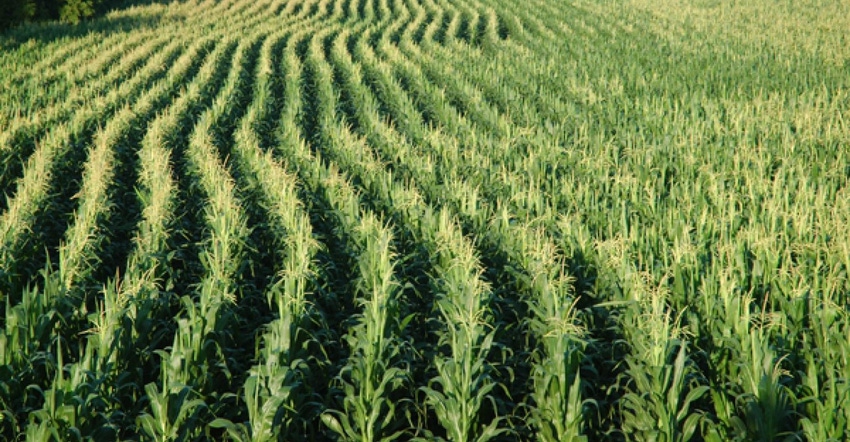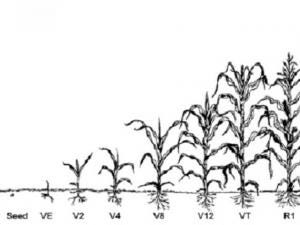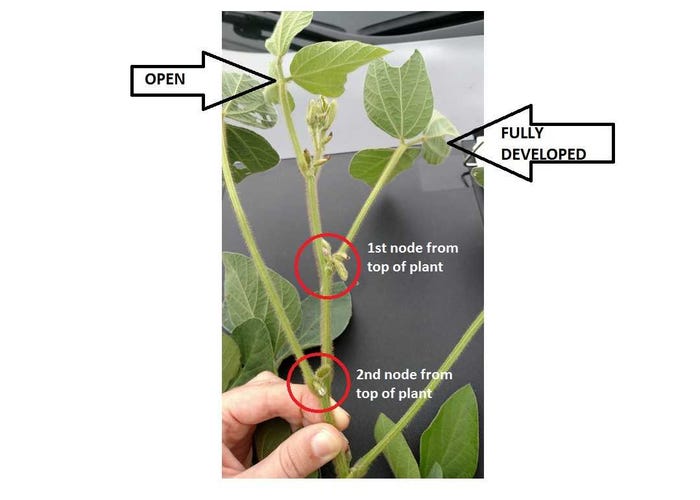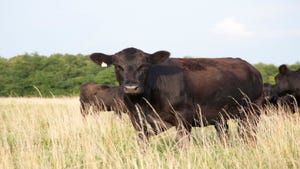August 8, 2019

By Laura Lindsey, Peter Thomison
Corn
Crop development varies tremendously across Ohio and the Midwest because of planting dates that range from late April to early July. According to field agronomists in some areas of the state, it looks like late-planted crops are “ rushing through development” …Unlike soybean, corn development is directly related to temperature, i.e. heat unit accumulation. Above average July temperatures (especially nighttime temperatures) have promoted rapid corn growth and development. After corn reaches the V10 stage (and most of our June plantings are near or beyond this stage), leaf collar emergence occurs at approximately one leaf every 50 GDDs.

Late planted corn fields (especially those that have adequate soil moisture and good soil fertility and weed control) may appear to be “catching up” with neighboring fields planted earlier. The rapid growth of late planted corn is associated with greater vegetative growth and faster canopy closure, which will help optimize yields. However, it does not mean that the rate of development of later plantings is greater than earlier plantings. Corn growth and development have distinct meanings (Abendroth et al., 2011). Growth refers to the increase in size of an individual plant (or plant component) whereas development refers to a plant’s progression from earlier to later stages of maturity based on specific criteria (e.g., numbers of leaf collars). So, while late planted corn may appear to be “catching up in terms” in terms of vegetative growth, i.e. plant height (probably because of longer internodes), it’s not caught up from the standpoint of development (leaf collar stages).
Corn plants can "adjust" their development in response to a shortened growing season. As was noted in a recent C.O.R.N. newsletter article (https://agcrops.osu.edu/newsletter/corn-newsletter/2019-12/will-planting...), a hybrid planted after late May will mature at a faster thermal rate (i.e. require fewer heat units) than the same hybrid planted in late April or early May. One of the consequences of delayed planting is that thermal time (GDD accumulation) from the dent stage (R5) to “black layer” or physiological maturity (R6) is shortened, “though this may simply reflect a premature maturation of the grain caused by the cumulative effects of shorter daylengths and cooler days in early fall or by outright death of the plants by a killing fall freeze” (Nielsen, 2018). Moreover, instead of a grain moisture content of about 30% at black layer, typical for normal planting dates, grain moisture at black layer for late plantings may be as high as 40%, which may require longer field drying and harvest.
Soybean
Soybean growth and development are related to photoperiod (day/night length) as well as temperature (e.g., warmer temperatures, faster growth). This year, soybeans planted early (yes, this did occur in some areas…) were slow to emerge and develop vegetative growth due to cool temperatures and wet weather. In late June, I observed soybean plants with three nodes, but were also flowering (R1 to R2 growth stage).

Similar to corn, do not rely on calendar date or plant height to stage soybean plants. To stage soybean plants, my lab uses Dr. Shawn Conley’s “A Visual Guide to Soybean Growth Stages” found here: https://coolbean.info/library/documents/2017_Soybean_GrowthDev_Guide_FINAL.pdf. The reproductive stages of soybean refer to flower, pod, and seed development at specific nodes (e.g., R2 = open flower at one of the two uppermost nodes on the main stem with a fully developed leaf or R3 = pod is 3/16th inch long at one of the four uppermost nodes on the main stem with a fully developed leaf). One area of particular confusion is “open” vs “fully developed” leaf (see picture). A leaf is fully developed and the node is counted when the leaf at the node immediately above it is open. The soybean plant pictured is at the R3 growth stage.
This year, staging an entire field may be challenging as some fields are extremely uneven. However, try to select areas within a field to stage that are fairly representative of the entire field (e.g., avoid areas that had standing water). Make sure to stage several plants within each area of the field. For a field to be considered at a growth stage, >50% of the plants must be at that particular stage (or beyond).
Source: Ohio State University
The source is solely responsible for the information provided and is wholly owned by the source. Informa Business Media and all its subsidiaries are not responsible for any of the content contained in this information asset.
You May Also Like




